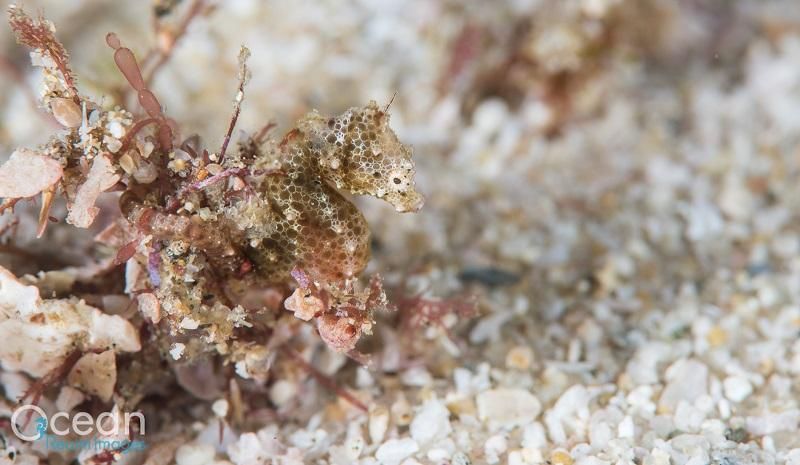Newly Discovered Pygmy Seahorse Species Is the Size of a Fingernail
This tiny creature is the first of its kind discovered near the continent of Africa
/https://tf-cmsv2-smithsonianmag-media.s3.amazonaws.com/filer/fb/00/fb00ff17-2854-43ef-a5a7-04c20432cf7e/hippocumpus_nalu_adult_male_web.jpg)
In 2017, diving instructor Savannah Nalu Olivier was exploring the eastern coast of South Africa in Sodwana Bay when she spotted something surprising: a tiny seahorse no bigger than her fingernail. When pygmy seahorse expert Richard Smith and biologist Louw Claassens saw photos of Olivier’s find, they realized she had made a huge discovery, Douglas Main reports for National Geographic.
Until now, only seven pygmy seahorse species had been identified worldwide. One of those species was discovered in Japan, and the remaining six were found in the Coral Triangle in the eastern Pacific. This newly discovered South African species lives 5,000 miles away and is the first pygmy seahorse discovered in the Indian Ocean, per a University of Leeds statement.
“It’s like finding a kangaroo in Norway,” Smith, pygmy seahorse expert and co-author on the study, tells National Geographic.
The research team published their findings in the scientific journal ZooKeys this month. They dubbed the tiny seahorse Hippocampus nalu, a reference to the Olivier’s middle name. “Nalu” also translates to “here it is” in the local isiXhosa and isiZulu languages—“to show that the species had been there all along until its discovery,” some of the study authors write in a piece for The Conversation.
The tiny creatures have a honey-brown color and a reddish tail which allows them to blend in with the surrounding algae and sand. According to a PBS video from 2015, most pygmy seahorses survive by camouflaging against the corals or algae where they live. Their exceptional camouflage abilities, combined with their tiny size, make finding pygmy seahorses “like finding a needle in a haystack” for scientists, according to a statement from Smith, a pygmy seahorse expert and one of the paper co-authors.

Hippocampus nalu grow to a maximum size of 2 centimeters—so small that two of them would fit, tail to snout, across the length of a United States nickel coin. Researchers even collected one juvenile that measured just a centimeter long, according to Smith’s statement.
These newly classified seahorses have spiky, pointed spines on their backs, whereas the other known species of pygmy seahorse have flat-tipped spines, according to National Geographic. They were also discovered in a stormy area of the Sodwana Bay prone to large swells. This was surprising, considering that most other species of pygmy seahorses have been found in relatively sheltered coral reefs, per the authors’ article in The Conversation.
In an interview with National Geographic, Thomas Trnski, head of natural sciences at the Auckland Museum in New Zealand, says that this discovery “demonstrates that there are still many discoveries to be made in the oceans, even in shallow waters near the coast.” Trnski, who was not involved in the study, points out that almost all of the pygmy seahorse species have been discovered in the last 20 years.
Claassens, a co-author on the study and director of Knysna Basin Project says in a University of Leeds statement: “What an exciting journey—from a chat on a beach to finding the first South African pygmy seahorse!”
“This should be a call to action for all divers,” Claassens continues. “New discoveries might just be around the next reef.”
/https://tf-cmsv2-smithsonianmag-media.s3.amazonaws.com/accounts/headshot/nora.png)
/https://tf-cmsv2-smithsonianmag-media.s3.amazonaws.com/accounts/headshot/nora.png)